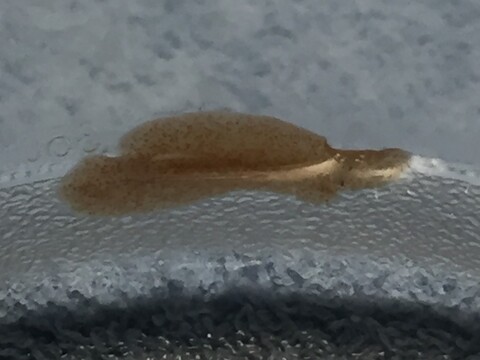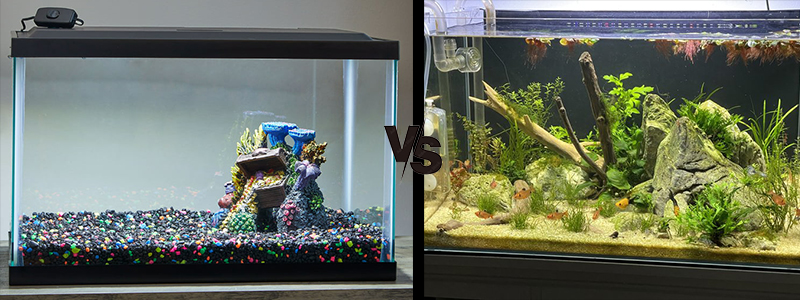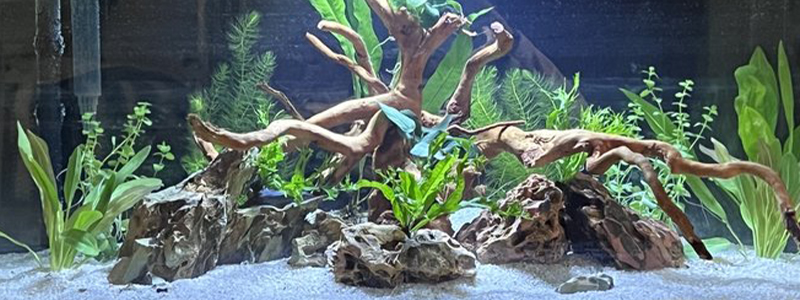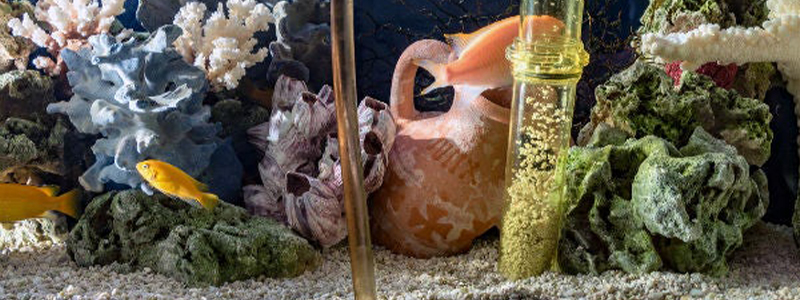Have you seen a strange blob lurking in your aquarium when the lights go down? It may be a polyclad flatworm.
These unusual creatures are nocturnal, somewhat freaky, and NOT reef safe.
Those that find their way into reef tanks as uninvited hitchhikers on live rock. They can distort their bodies to fit into the smallest of holes and are incredibly resilient – there have been posts on aquarist forums of polyclads surviving days and even weeks exposed to air… flatworm dips like Bayer and Flatworm Exit… and even boiling of the rock they were hiding in.
Meet the polyclad flatworm. Is this strange blob hiding in your tank?

While most of them encountered in the hobby range in size from a pin-head to a quarter, they can grow to over 6 inches in diameter.
Disclosure: This article contains affiliate links. When you follow a link to purchase the products, I sometimes earn a commission, at no additional cost to you. Read my full disclosure here.
Their primary food is clams – they’re even colored just like a clam’s mantle as camouflage.
However, they will also gladly and actively dine on worms, snails, crustaceans, and some corals.
If snails or other members of your clean-up crew seem to be disappearing at night, you may have one or polyclads in hiding in your tank.
I suspect anemones may be on their menu as well…
When I returned home from a recent trip I noticed my new rock flower anemone was missing. My wife was 100% certain it was still front-and-center at its spot in the sand the evening before. It was little guy, only about the diameter of a quarter in size, so I thought it might balled up and let the current carry it to a new spot. But after searching every cranny, crevice, and cave it was nowhere to be seen.
Then, a day later, I notice a freakish, quarter-sized shadow lurking on the sand in a multi-entrance cave. As soon as the light of the flashlight hit it, the strange blob glided across the sand down into a small crevice beneath the rock.
A day or two later I found the remains of my little rock anemone outside the den I’d seen the blob crawl into. The cause my rock anemone’s mysterious disappearance had been confirmed.
I began digging through online photos, trying to figure out what it was – and then I saw it, a picture of a weird creature that looked like the same strange blob lurking in my tank: a polyclad flatworm.
With a possible suspect ID’d I made a trap to try to catch it – here’s how…
- I took a small, 1/2 cup-sized Glad food container…
- cut 2-inch long slit in it that was about wide as a toothpick – wide enough for a flatworm to squeeze in but thin enough to keep my clean-up crew out…
- and put a canned clam in it (I would have cracked open a live one but they were out of season at the local grocery stores).
About half-an-hour after my tanks lights went down for the night, I went to put the trap in the tank. Before I even got it to the bottom of the tank, my wife spotted the blob crawling across the glass on the other side of the tank. It was in pursuit of a nassarius snail.
I grabbed a pair of 12-inch tweezers and pulled out of the tank. In hindsight this was a bad move, but I got lucky…
Polyclad flatworms are fragile. And if you tear them, even the tiniest piece left in the tank can grow into a new flatworm. Fortunately, my tweezers gripped it near the center of its body where it is a little stronger and less likely to tear.
I’ve put the clam-baited trap in the tank for a few hours after sundown 3 times since then but haven’t caught or seen any others since then. I intend to do it at least 3-4 more times over the next two weeks, just to be safe before I add a few new rock flower anemones to replace the one that it ate.
Check out the short bit of video I shot to get really good look at this strange, carnivorous blob:
You can find great posts with even more information on polyclad flatworms at Reef2Reef, ReefCentral, and Chuck’s Addiction(a great all-round site for identifying hitchhikers).
And pictures of the many different color combinations and camouflage patterns found in Google Images.



